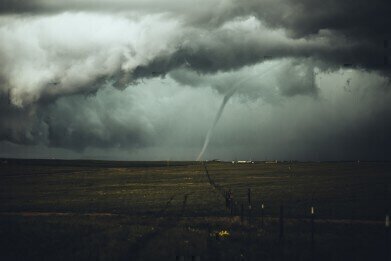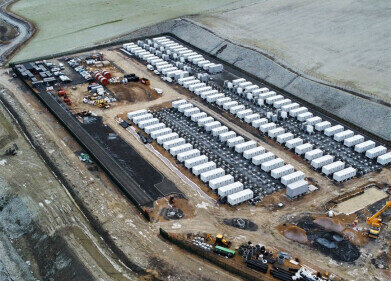Green Energy
Could Tornadoes or Hurricanes Be a Viable Source of Green Energy?
Nov 27 2014
It has been estimated that a hurricane can produce up to 200 times more energy than the entire world generates in the same moment. That’s a phenomenal amount of energy! Tornadoes and hurricanes are notoriously extreme meteorological events with deadly wind speeds, terrifying lightning storms and excessive rainfall. They are also relatively common with an average of 996 tornadoes occurring worldwide each year and around 85 hurricanes, typhoons and tropical cyclones.
This leads us to a though… Is it possible to turn the sheer force and frequency of such storms into something more positive? Can we harness the natural energy produced by tornadoes and hurricanes and use it as a green alternative to fossil fuels?
A New Kind of Green Energy?
In theory, energy could be collected from storms, but it wouldn’t be easy. Nature is unpredictable and hurricanes and tornadoes are extremely dangerous. Hurricanes have a short life cycle and they spend much of it at sea. When they do hit land they are generally much calmer and so their energy output is significantly lower. Tornadoes are equally difficult - they last mere minutes, change direction at will and have a habit of destroying everything in their path.
The technology needed to harvest storm energy would have to be very robust, portable and cost-effective - an almost impossible wish-list of qualities. Hurricanes and tornadoes are far too unpredictable to make building this technology worthwhile. And scientists still have a huge amount to learn about these storms, so harnessing energy is a low priority at the moment.
At least, harnessing energy from natural tornadoes is not possible at present. But what about artificial storms?
Replicating Tornadoes in a Controlled Environment
Is there a way to recreate and harness the power and energy of a storm in a controlled environment? According to Chris Landsea, science and operations officer at the U.S. National Hurricane Centre, it may be possible, one day.
The majority of a tornado’s energy is confined to the vortex; the chaotic, spiralling centre of the storm. Rather than recreating a violent and potentially dangerous tornado, scientists would just need to create a controlled vortex on a similar scale.
While this hasn’t been achieved yet, the proposal for the Atmospheric Vortex Engine (AVE) shows it is a future possibility. The AVE is a 328 foot (100 metre) chimney-like structure. Heat is introduced at the base to encourage warm air to condense into energy-releasing water vapour. Turbines at the top of the structure would collect the energy and convert it. Green energy produced in this way has the potential to meet a large percentage of global energy needs.
Several AVE prototypes have been produced but we could be a long way off seeing a finished product yet. That said the AVE could eventually be the closest thing we have to harnessing the immense power of storms.
Undoubtedly, it’s important that we explore the possibilities of green energy sources in an attempt to reduce our reliance on fossil fuels and the resulting pollution. Paradoxically, research released by the Met Office suggests that the frequency of North Atlantic hurricanes and their level of destruction is directly related to air quality. Lower pollution levels within the atmosphere are more likely to result in a large and damaging hurricane, as well as a higher rate of tropical storm occurrences. However, there are many other alternatvie sources of green energy, such as the sea or even space - the search is far from over!
Events
Apr 22 2024 Hannover, Germany
Apr 23 2024 Kuala Lumpur, Malaysia
Apr 24 2024 Sao Paulo, Brasil
May 05 2024 Seville, Spain
May 13 2024 Munich, Germany














